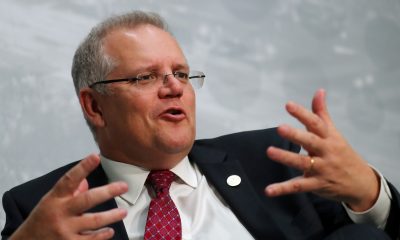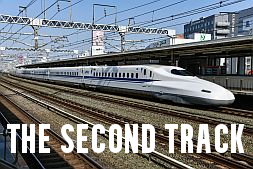Australia – The hapless country?

The fire event that’s swept across Australia over the past few weeks is massive. Over 5.9 million hectares (or 15 million acres) have already burned out and the fires are still raging. Over 1500 homes have been destroyed and the counting’s incomplete. Already 23 people are confirmed dead, 6 are missing in the state of Victoria alone.
There’s more than 1500 kilometres of ravaged landscape — huge tracts of pristine forest destroyed, burnt out towns and villages — a vast wasteland the length of Australia’s eastern seaboard, as well as destruction around Adelaide and in the West. The drifting haze has turned New Zealand’s glaciers, over 1600 kilometres away, from pristine white to brown.
The national capital, Canberra, has been enshrouded in a pall of smoke for weeks from bushfires to the east. Its air quality is presently worse than that of any other city in the world — particulate matter readings have consistently exceeded 3500. Above 200 is considered hazardous.

This is not just an Australian national crisis. It’s a major global disaster, already 6.2 times bigger than the Brazilian fires of 2019 and continuing to scale up as relentless summer heat and unpredictable winds fan new fire fronts.
The Brazil event was a crisis of global impact and proportion. That’s how many in the global community already see Australia. They reasonably seek an account of why and how it happened and what can be done about preventing such events in the future.
But who’s responsible?
Certainly Australian Prime Minister Scott Morrison does not think he is, now back in Australia from an ill-judged Hawaiian holiday. His role he says is to ‘provide comfort’ to the many distressed Australians, ‘remain focused’ and not to re-evaluate his government’s minimalist approach to climate change or the raft of other environmental policies at play in the disaster.
Climate change and energy policy is just one of the areas of policy where Australia has squibbed the big strategic choices the changing times demand.
The Coalition government, which Morrison now heads up, has been wracked over how to deal with climate change and energy policy for the past decade. Minority or narrow majority Coalition governments have seen centre-right leaders captured to the agendas of the extreme right on climate change, foreign and social policy issues.
Even if Mr Morrison were of a strategic bent — and there’s little evidence of that yet — he’d be instinctively loath to take a stand on climate change or energy policy. While his political standing in his own party has been high because of his more-or-less single-handed victory in last May’s general election, his majority is just one in the crucial lower house of Parliament.
His election victory was seen as vindicating a cautious stance on climate change because of decisive wins in the coal-exporting electorates in Queensland and New South Wales. Yet the success of activist climate change candidates in the southern states, including Zali Steggall who ousted climate change sceptic and former prime minister Tony Abbott, and the fact that 61 per cent of Australians this year wanted more action on climate change suggests that a more nuanced interpretation of what voters wanted is wise.
When there’s a choice between the cosy reassurances of comfort politics and making the big strategic calls needed to deal with the transformational issues that confront Australia today, comfort politics has won hands down.
It’s no different when it comes to grappling with the realities of Australia’s new geopolitical circumstances in Asia.
The advent of the anti-globalist Mr Donald Trump and his economic confrontation with a risen China left Australia scrambling to reconcile its security relationship with the United States and its economic partnership with China.
The biggest risk is that Australia will get trapped in an uncertain US strategy towards China. That strategy has invited hostility from its most important trading partner and changed the global rules of engagement in a way that opened Australia to real economic and security damage.
That is why establishing a constructive trajectory in political dealings with China is now crucial. That is important to the economic ambitions of the Australian community; it is central to preserving prosperity and political stability in the Asia Pacific region; and it is critical to securing the rules-based global economic and political system that underpins Australia’s prosperity and political security.
In this week’s lead essay, James Laurenceson makes it clear that the comfy all-embracing Indo-Pacific idea within which Australia has chosen to frame its foreign policy has limited utility in defining a path forward in dealing with the US–China conundrum.
The resilience of the Australia–China trade relationship that Laurenceson carefully documents — with Australia’s trade shares with China continuing to rise as those with the rest of the ‘Indo-Pacific’ shrink — depends fundamentally on both partners’ commitment to the international market system and the rules under which it has flourished.
That system is the core of economic and political security in Asia and it’s under threat from the Trump administration’s ‘America First’ trade and decoupling strategies. At the same time, the political anxieties caused by China’s rise, partly but not wholly because of its different political system, have to be confronted frankly in Australia’s dialogue with China.
No amount of political sweet-talk will avoid the need to deal with the facts of climate change or Australia’s geopolitical circumstances today.
On climate change and Australia’s geopolitical future, political time is running out. Whatever the sentiment before this summer’s horrific fires, the political pressure on Morrison’s febrile coalition has increased dramatically.
So too is the pressure building for a surer, independent stance that defends Australia’s economic and security interests in Asia while balancing the alliance relationship with an increasingly China-shy United States under either Mr Trump or his successor.
This article was written by the Editorial Board at ANU and published by the East Asia Forum.
Based out of the Crawford School of Public Policy within the College of Asia and the Pacific at the Australian National University, the Forum is a joint initiative of the East Asian Bureau of Economic Research (EABER) and the South Asian Bureau of Economic Research (SABER).







